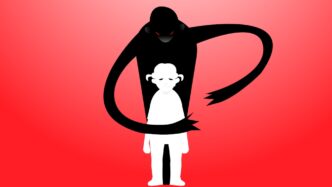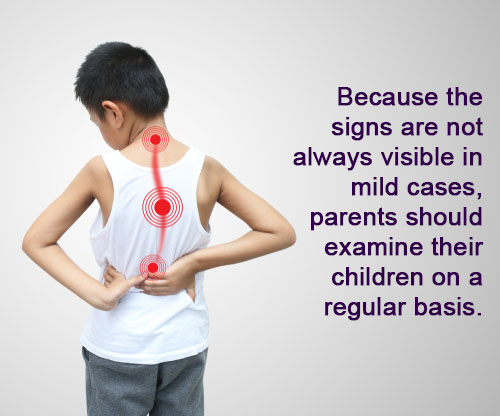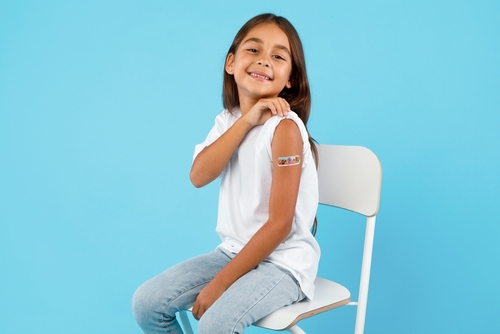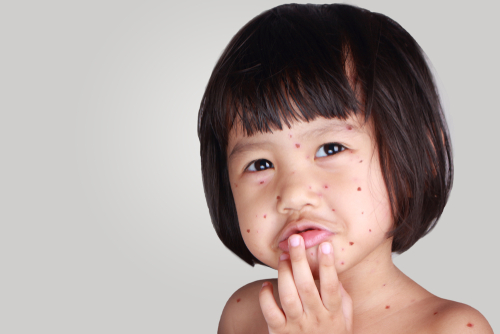Every child has the right to dream and to achieve their fullest potential. However, child marriages rob them of this very basic right and go on to deprive them of their childhood, adolescence, mental and physical wellbeing.
WORDS ASSOCIATE PROFESSOR DR ANITHA PONNUPILLAI AND DR PUNITHAVATHY SHANMUGANATHAN
 FEATURED EXPERT FEATURED EXPERTASSOCIATE PROFESSOR DR ANITHA PONNUPILLAI Senior Lecturer School of Medicine Faculty of Health and Medical Sciences Taylor’s University |
 FEATURED EXPERT FEATURED EXPERTDR PUNITHAVATHY SHANMUGANATHAN Senior Lecturer School of Medicine Faculty of Health and Medical Sciences Taylor’s University |
CHILD MARRIAGE IN MALAYSIA
Defined as “any formal marriage or informal union between a child under 18 and an adult or another child” by UNICEF, child marriage globally affects 12 million young women every year.
15,000 cases of child marriages were reported in Malaysia between 2007 to 2017 and as of 2018, 1,500 children marry annually. These numbers may only be the tip of the iceberg as many child marriages are unregistered and unrecorded.
In March 2022, the Ministry of Women, Family and Community Development stated that it would not legislate against child marriages.
However, it would curb and address underage marriages through the implementation of the National Strategic Plan in Handling the Causes of Child Marriage (2020-2025).
The National Strategic Plan in Handling the Causes of Child Marriage Has Identified 6 Risk Factors for Child Marriage
- Poverty
- Social acceptance of child marriage
- Lack of access to education
- Legislation that allows marriage under the age of 18
- Lack of legal status and rights for undocumented children
- Lack of access to sexual and reproductive services
HEALTH CONCERNS OF CHILD MARRIAGE
Child marriages involving adolescent girls significantly impact their physical, psychological, and social wellbeing, and have profound short and long-term consequences on health and their livelihood.
Anatomical and physiological immaturity poses risks for adolescent girls during pregnancy and childbirth. The female pelvis is not fully developed and can result in childbirth complications and entails caesarean delivery. Childbirths can be too soon, too close, or too many with child marriage which further escalate the health risks.
Pregnant girls are more prone to complications like preeclampsia (hypertension in pregnancy), eclampsia (fits in pregnancy), premature birth, stillbirth, difficult labour, postpartum endometritis (infection of uterus after childbirth), systemic infection, and disability like obstetric fistula (leakage of urine from vagina) than women between 20 and 24 years old.
More alarmingly in developing countries, pregnancy and childbirth complications are the leading causes of death in girls between 10 and 19 years, accounting for 99% of maternal deaths of women aged 15 to 49, which are mostly preventable.
Girls under 18 are also 35-55% more likely to experience preterm delivery or low birthweight than those who are older than 19.
Infant deaths and under-five deaths are also reported to be higher by 60% and 28% respectively in mothers under 18. This is attributable to the mother’s poor nutritional status, physical and emotional immaturity, lack of access to social and reproductive services, and high risk of infectious diseases.
PSYCHOLOGICAL CONCERNS
Girls married before 18 are deprived of a wholesome transition to adolescence, thrown into adulthood, clueless, and without adequate life skills.
They suffer from significant mental health issues and severe mental distress, because the disruption to their childhood isolates them from their family and peers.
Depression is the most common diagnosis reported among this group, as they face more stressful life events and are at higher risk for substance-related disorders.
Suicidal thoughts and attempts were also identified among the girls forced into early marriages, used as a form of punishment for their families due to the stigma attached to suicide-related deaths.
Consequently, these girls were at a higher risk of post-traumatic stress disorder (PTSD), adjustment disorder, and anxiety.
VIOLENCE FROM INTIMATE PARTNER
Lacking confidence and the ability to maintain a healthy married relationship, girls forced into child marriages are at risk of being controlled by their husband and in-laws. Decision-making power about their lives shifts to their spouses and in-laws.
They experience intimate partner violence at the hands of their husbands and their in-laws, drop out of school and usually lack employment. A girl forced into a child marriage is exposed to nearly twice the risk of domestic violence compared to those that married after 18.
The lack of education, empowerment, and awareness is an impediment to the girls’ ability to advocate for themselves. Consequently, they remain trapped in their husband’s homes and unfortunately pass this vicious cycle of poverty, violence, and inequality to their own children.
WHAT CAN WE DO?
Evidence has shown that governmental strategies that focus on the risk factors can put an end to the child marriage issue.
The National Strategy Plan aims at implementing policies and programmes to address the determinants which directly impact a child: poverty mitigation, upgrading the family’s socioeconomic status by strengthening the financial and social support, and empowerment of girls’ human capital through education and job training.
However, social and attitude change programmes need to be targeted towards boys for gender equality, whereas emphasis needs to be placed on men to stop pursuing child brides.
We believe it is important to set the legal minimum age at marriage for girls and boys at 18 irrespective of the ethnic or religious background.
However, this alone may not combat the harmful practice of child marriage unless the change is implemented concurrently at macro, meta, and grassroots level which is challenging.
Our priorities should be pregnancy prevention, sex education, and universal access to sexual and reproductive health (SRH) services, especially emergency contraception, through addressing the legal and cultural barriers.
Implementing effective SRH counselling at school and community with a non-judgmental approach is crucial since premarital conception is the key risk factor for marriage under 18.
| This article is part of our series on issues that impact children and their health as well as welfare. |
References:
- United Nations Children’s Fund. (2018, July). Child Marriage: Latest trends and prospects. https://data.unicef.org/resources/child-marriage-latest-trends-and-future-prospects/
- UNICEF Malaysia. (2018, July). Ending child marriage. https://www.unicef.org/malaysia/ending-child-marriage#:%7E:text=Advocacy%20campaign%202021,all%20communities%20across%20the%20country
- Fan, S., & Koski, A. (2022). The health consequences of child marriage: A systematic review of the evidence. BMC public health, 22(1). https://doi.org/10.1186/s12889-022-12707-x
- World Health Organization. (2020, January 31). Adolescent pregnancy. https://www.who.int/news-room/fact-sheets/detail/adolescent-pregnancy#:%7E:text=Adolescent%20mothers%20aged%2010%E2%80%9319,women%20aged%2020%E2%80%9324%20years.&text=Additionally%2C%20some%203.9%20million%20unsafe,morbidity%20and%20lasting%20health%20problems
- Burgess, R. A., Jeffery, M., Odero, S. A., Rose-Clarke, K., & Devakumar, D. (2022). Overlooked and unaddressed: A narrative review of mental health consequences of child marriages. PLOS global public health, 2(1), e0000131. https://doi.org/10.1371/journal.pgph.0000131
- Nour N. M. (2009). Child marriage: a silent health and human rights issue. Reviews in obstetrics & gynecology, 2(1), 51–56.
- Yaya, S., Odusina, E. K., & Bishwajit, G. (2019). Prevalence of child marriage and its impact on fertility outcomes in 34 sub-Saharan African countries. BMC international health and human rights, 19(1), 33. https://doi.org/10.1186/s12914-019-0219-1










